A week ago an article came out in Метро газета, “Дом Наркомфина ремонтируют”
Below is a translation of it:
Narkomfin is being renovated
The international association of architects Docomomo is sounding the alarm – Narkomfin is being destroyed from the inside, and soon will not be able to be called a monument of architecture of the twentieth century
The issue is that in one of the apartments in the building the yoga studio did a renovation (евроремонт) – replaced unique sliding windows with multiple glass units (стеклопакет), wooden floor – plain concrete. Natalia Melikovа, Docomomo photographer, reported this to Metro. The other day she visited the studio and was horrified:
– In a two-level apartment walls were broken, which were part of the original plan.
Nikolai Vassiliev, General Secretary of Docomomo does not understand why Mosgornaslediya has turned a blind eye to the existence of the house:
– It is unlikely that the yoga studio had permission to redevelop. If I’m not mistaken, according to the federal law No. 73 “On Cultural Heritage” a scientific restoration should be carried out under the supervision of Mosgornaslediya – using original techniques and materials, and it can be trusted only to professionals who have a license.
Studio Yoga @ 11 is owned by Alexander Senatorov’s investment group “Kopernik”, who also owns a portion of Narkomfin. Studio representatives do not understand the attacks of architects:
– No we did not break the walls. There was nothing to break. There was nothing other than the outer walls.
A little back story is in order: I had seen announcements about the studio’s opening in Большой Город. And there is nothing new about hearing yoga and Narkomfin in the same sentence, a Google search of “наркомфин йога” and you’ve got your answer – it’s been going on for some time in the form of yoga on the roof of Narkomfin, as seen here and here and here.
So after the studio’s Facebook page advertized a free session, I decided to go. I had long heard of everyone’s love with yoga and thought it would be interesting to try it out for myself, it was a free session after all! And in Narkomfin! win-win. As nervous as I was trying something different, especially as hyped up as yoga, I actually really enjoyed the session. At one point I was so relaxed and “in the zone” that I forgot where I was and almost fell asleep! Yoga really allows you to let go of stresses and “actively relax”. Afterwards, a few people remained, had some tea, and talked. Not everyone was familiar with the history and architectural particularities of Narkomfin, and of course were very curious. Anyone can recognize the building is not just some ordinary building. Also very noticeable – is the contrast between the condition of the rest of the building and the yoga studio. The yoga studio is brand new.
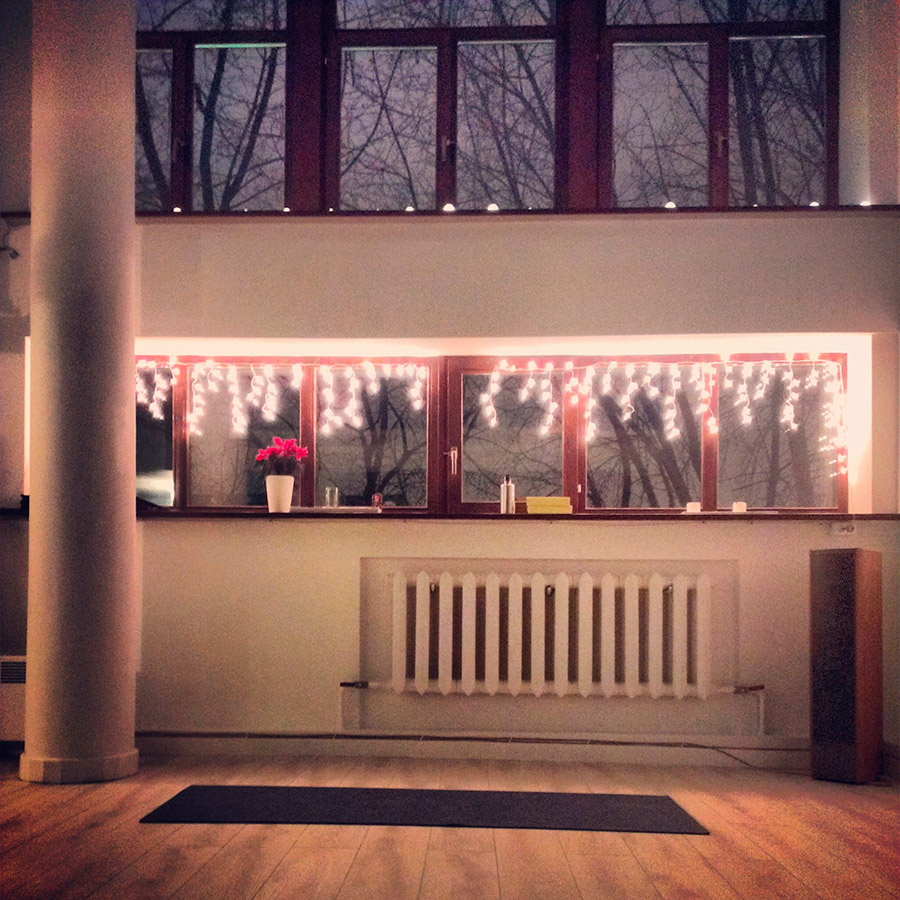
See the photo on Instagram
To quote my Facebook status update on Feb 13,
Tonight I tried out yoga (for the 1st time!) at the recently opened Yoga at 11 studio inside Дом Наркомфина. Yoga, good for the soul))) Now if this wonderful building is saved, that would also be good for the soul 
And followed by this comment:
While it is undeniably regrettable that the original fabric has been glossed over with a brand new remont, the fact that the layout Ginzburg came up with can be adapted to multiple functions, well, I just think that is a compliment to his architectural design. I just hope that those who get to decide the future function of Narkomfin will respect not only the interesting design of the building, but also its historic properties.
Which leads to a few necessary clarifications of the Metro article:
1. “Docomomo photographer” – yes I am member of Docomomo, yes I am a photographer, but those are separate, and positioned this way it alludes to the idea that I went to yoga as a “Docomomo photographer on a mission to investigate”, which is false. I went on a mission to try yoga. And I am best known and therefore more accurately represented by the description, Natalia Melikova – photographer, creator of The Constructivist Project.
2. In a telephone interview, I did describe that everything about the studio was new: new floors, new windows, newly painted walls. Anyone can see for themselves on the studio’s own site. That I was “horrified” or “shocked” – however you translate “пришла в ужас”, is an exaggerated word choice for recognizing the obvious difference between the brand new studio and the poor condition of the rest of the building, also public knowledge that can be gathered from numerous photos found on the internet, or by simply walking past the building in person.
3. “In a two-level apartment walls were broken, which were part of the original plan.” – In the article this is presented as a direct quote from me, something that I never said. I had never been inside this apartment before the studio was installed there, and had never seen the original layout or any archival photos of the space – there is no way for me to know to make such a declarative comment. Also, as much as I’ve come to learn about constructivist architecture in doing this project, this does not make me an expert. At best, I’m an informed observer. But, since this was published, the issue of “broken or not broken walls” has come up, and it is something for historians to discuss since there might have been a wall around the kitchen area when the apartment was originally built back in the 1930s, but when that wall was removed, nobody knows since there have been so many different tenants, and the statement that “There was nothing to break. There was nothing other than the outer walls” is most likely true.
4. “attacks” of architects – is a misleading word choice. Better word choice, “inquiry” into the restoration project at Narkomfin, since 1. Narkomfin is monument and 2. since works have been visably executed – the studio.
Because Narkomfin has been in the news repeatedly and a topic of discussion for such a long time without any progress, the statement that “Narkomfin is being destroyed from the inside” is hardly an alarm. Reports of restoration projects have been numerous with no results, so even if it had been reported that the walls were being painted neon pink and a casino had been installed (or any other changes that surely should cause alarm), there still would be no reaction whatsoever. And that is what is very alarming. So while its understandable for the article to have an agenda to stir up some reaction and motivate people to once again care about what is going on in the endless saga of Narkomfin by writing from a certain angle and using particular word choices, being portrayed as aggressive and “crying wolf” is also not constructive nor desirable. However, I do not think it was intentional to misrepresent the situation, it’s just how it came out. I can only offer this much too long post as a clarification (one day I will learn to write more concisely, I hope!).
So to clarify, I really enjoyed the yoga, and some yoga is probably just what I need after being so concerned about Narkomfin lately. If the studio was located anywhere else, I would not bat an eyelash at the type of floor and windows. It would be exactly what you would expect of a yoga studio, clean and simple. However, Narkomfin is an official regional monument of historical and cultural significance, it is recognized by international organizations such as the World Monuments Fund, ICOMOS, and UNESCO as being a significant architectural landmark, it is revered by architects, historians, photographers, and a whole lot of enthusiasts from all walks of life, it is appreciated by the people that have lived and those that currently live, in Narkomfin. So it is not just some ordinary building and discussing Narkomfin is guaranteed to be a passionate debate.
It is GREAT that finally actions are being taken to do something about Narkomfin, it is long overdue. Anyone concerned with the building’s condition would only cheer on and encourage further activities to bring Narkomfin back to life. Narkomfin presents numerous challenges so anyone ready to take that on should be applauded, but also understand the huge responsibility that comes with deciding the fate of this famous building. Since the situation with Narkomfin is unclear and largely unknown to the public, we have only this example of the yoga studio as a demonstration of the type of work that might be done to the building. Which raises the question, what else is in store for Narkomfin? Changes to the building are irreversible, so any work done to it should be careful, planned, and under the guidance of experts in the field of restoration. I think most everyone can agree that the Hotel Moskva, now a rebuilt replica, is not the same thing as the original. It looks like Hotel Moskva, but it is a fake. Narkomfin and новодел (replica) should not be in the same sentence.
In an attempt to simplify this very complex issue, when working with historic properties, I would only hope that there was more openness, discussion, and working together between developers and the preservation community. Both are experts in their fields. Developers make an investment profitable and historic buildings need this to survive and be relevant in today’s world. The work of preservationists is to ensure that the building retains its inherent value – historic authenticity is indeed valuable. This looks like an excellent opportunity to rally together, all united by our fascination and admiration of this masterpiece of architecture, the Narkomfin.

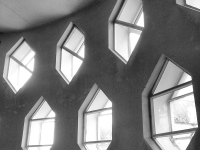
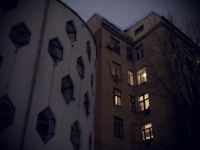
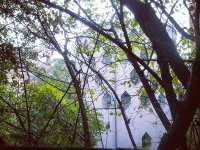
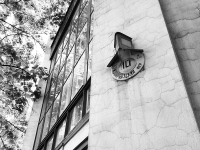
Pingback: A look back at 2014 | THE CONSTRUCTIVIST PROJECT